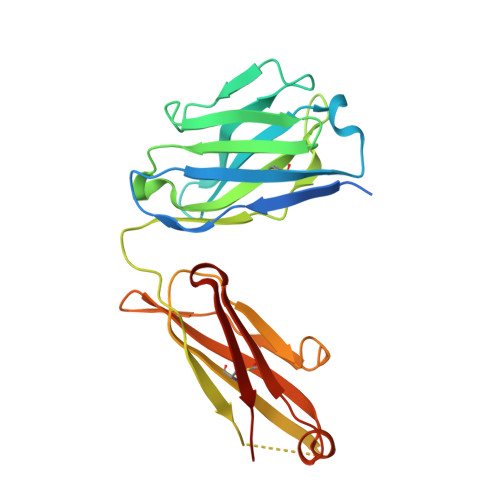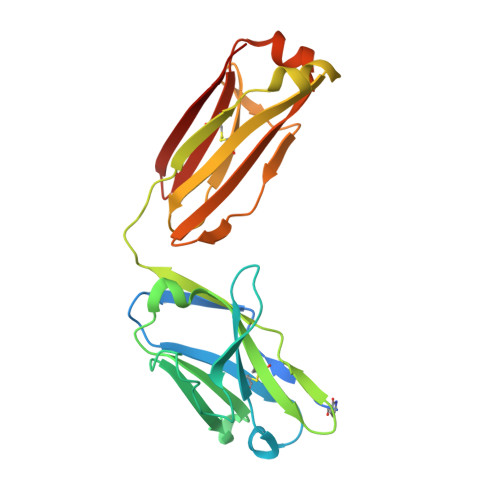Tailored placement of a turn-forming PA tag into the structured domain of a protein to probe its conformational state
Fujii, Y., Matsunaga, Y., Arimori, T., Kitago, Y., Ogasawara, S., Kaneko, M.K., Kato, Y., Takagi, J.(2016) J Cell Sci 129: 1512-1522
- PubMed: 26872787
- DOI: https://doi.org/10.1242/jcs.176685
- Primary Citation of Related Structures:
4YNY, 4YO0 - PubMed Abstract:
Placement of a tag sequence is usually limited to either terminal end of the target protein, reducing the potential of epitope tags for various labeling applications. The PA tag is a dodecapeptide (GVAMPGAEDDVV) that is recognized by a high-affinity antibody NZ-1. We determined the crystal structure of the PA-tag-NZ-1 complex and found that NZ-1 recognizes a central segment of the PA tag peptide in a tight ¦Â-turn configuration, suggesting that it is compatible with the insertion into a loop. This possibility was tested and confirmed using multiple integrin subunits and semaphorin. More specifically, the PA tag can be inserted at multiple locations within the integrin ¦ÁIIb subunit (encoded by ITGA2B) of the fibrinogen receptor ¦ÁIIb¦Â3 integrin (of which the ¦Â3 subunit is encoded by ITGB3) without affecting the structural and functional integrity, while maintaining its high affinity for NZ-1. The large choice of the sites for 'epitope grafting' enabled the placement of the PA tag at a location whose accessibility is modulated during the biological action of the receptor. Thus, we succeeded in converting a general anti-tag antibody into a special anti-integrin antibody that can be classified as a ligand-induced binding site antibody.
Organizational Affiliation:
Laboratory of Protein Synthesis and Expression, Institute for Protein Research, Osaka University, 3-2 Yamadaoka, Suita, Osaka 565-0871, Japan Department of Regional Innovation, Tohoku University Graduate School of Medicine, 2-1 Seiryo-machi, Aoba-ku, Sendai 980-8575, Japan.




















